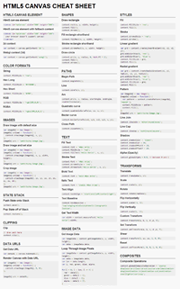Description

If CDC
stats are anything to go by, 26% of American adults live with a disability of some kind. This translates to 61 million people. It gets even more shocking; for every four people in the United States, one is disabled. On the global scale, 15% of the population or one billion people on the planet have some kind of disability according to World Bank.
Do these numbers have to do with anything? A lot, actually. If you have a website, it means you have to find ways of making it accessible to all. The Americans with Disability Act (ADA) is dead serious about making sure that people with disabilities can access websites with ease. If you want to pass the
website accessibility audit, you have no option than to make your site ADA compliant. Here are 7 tips for success.
Add Descriptions For Images
Adding alt text on all images on your website is a lot of work but it is necessary. It makes the site much more understandable for the visually impaired. A screen reader can easily decipher the information you are trying to convey with the message.
If you are using an informative image like an infographic, this tip is
particularly very important. The alt text should describe what the image is all about briefly. When a purblind individual visits your site, they should be able to read and understand the image from the alternative text. Make it clear, short, and sweet.
Easy Navigation Is A Must
An easy-to-navigate website does not only appeal to people with abilities but everyone else as well. When users visit your site, they should enjoy navigating through all the pages without too much hassle. You should not subject users to clicking tens of times to reach the inner depths of the site.
Everything should be labelled and positioned well so that every part of the site can be located with ease. Consider using
breadcrumbs on your page to make navigation easy.
Another great tip for making your website ADA compliant is making sure that keyboard navigation is possible. In the absence of a mouse, the PC can be operated with the keyboard only. This holds for the World Wide Web as well.
Users who cannot use the mouse or those that cannot see the screen can utilize the keyboard to access the site. Ensure that the entire site can be navigated using the keyboard’s spacebar, escape key, enter key, tab key, and arrow keys.
Use Contrast To Your Advantage
If you are using images and text in one place, one way to make it readable is to use a contrasting background. A user with visual impairment will have a hard time reading text that appears in front of an image if it is not clear.
A dark background to the text makes sure that the text is visible enough. For instance, if you have an image with a lot of greys and whites, you can use white text only if the background is a darker colour like black, red, or green.
The Content Management System Matters
When building a website, you will have countless options when it comes to choosing the content management system (CMS). WordPress and Drupal are the most popular but there are many others. The right CMS is one that supports accessibility. It should have accessible themes, widgets, plugins, and more. Things like posting comments, editing a blog post, editing toolbars, accessing tables, and closed captioning should be accessible as well.
Visually challenged individuals rely on screen readers to help them surf the web. These readers vocalize the content following the order of the site’s HTML sequence. If your content doesn’t follow a logical order that begins with the H1 title down to H4 or further, it will sound confusing to your disabled customers.
Make All Forms Accessible
Forms can present a huge challenge to screen readers. To know if your forms are accessible or not, check to see if all labels are identifiable and if fields use visual cues to prompt a user to add information. The screen readers should also know if the details entered are valid or invalid.
People living with disabilities deserve to enjoy the beauty of technology and the internet. What better way than to ensure that your site is ADA compliant? In the end, you will benefit as more potential customers will visit your site.

 Blog
Design
Development
Mobile
Inspiration
CSS
Javascript
News
Opinions
Politics
Menu
Blog
Design
Development
Mobile
Inspiration
CSS
Javascript
News
Opinions
Politics
Menu
